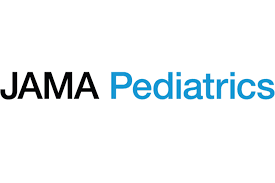Smart segregation, storage reduce biohazardous waste risks

From sharps and blood-soaked surgical instruments to discarded anesthetic agents, biohazardous waste from ORs can threaten human health and the environment. In addition, failure to adhere to regulatory requirements can result in significant fines. However, the volume and diversity of biohazardous waste can create challenges with managing this material. Mitigating…
4 ways ASCs balance strict infection control, limited resources

Reduced costs, faster recovery, and other advantages can make outpatient surgical procedures more convenient for providers and patients alike. Ambulatory surgery centers (ASCs) are incredibly safe, but a lot of work goes into infection control. Cross-trained staff often wear many hats, and limited budgets may not leave room for dedicated…
Study: Prophylactic antibiotics reduce SSIs in pediatric cholecystectomy

Editor's Note A cohort study published February 24 in JAMA Pediatrics found that prophylactic antibiotics reduced the odds of surgical site infections (SSIs) by 72% in children undergoing cholecystectomy for uncomplicated cholelithiasis. However, extended-spectrum antibiotics offered no additional benefit over cefazolin, suggesting that simpler prophylaxis protocols could optimize outcomes while…
Study: Post-laparotomy incisional negative pressure wound therapy fails to reduce infection risk

Editor's Note A large international clinical trial found that incisional negative pressure wound therapy (iNPWT) does not reduce surgical site infections (SSIs) following emergency laparotomy. The SUNRRISE trial, conducted across 34 hospitals in the UK and Australia and published January 27 in Jama Network, randomized 821 patients to receive either…
Study: EMR data can enhance hand hygiene compliance, infection prevention

Editor's Note Using electronic medical record (EMR) data to track time-stamped information on patient movements and interaction with healthcare workers (HCWs) can help predict and block potential avenues for pathogen transmission, researchers claim. Healio reported the news January 24. Published in the journal Infection Control & Hospital Epidemiology, the research…
Infection control guidelines focus on regional anesthesia, pain management

Editor's Note New infection control recommendations from the American Society of Regional Anesthesia and Pain Medicine (ASRA Pain Medicine) are purportedly the first comprehensive guidelines tailored specifically for regional anesthesia and interventional pain management procedures, such as cortisone injections and drug-delivery implants. As detailed in the organization’s January 21…
Study: Observational learning ineffective in ensuring nursing student infection control compliance

Editor's Note New research underscores the need for innovative educational approaches to strengthen infection control practices. Published January 8 in the American Journal of Infection control, the study examined the impact of clinical observations on nursing students' adherence to standard precautions. Findings show observational learning contributes minimally to compliance, accounting…
AAMI updates sterilization materials compatibility guidance

Editor's Note The Association for the Advancement of Medical Instrumentation (AAMI) has released the updated AAMI TIR17:2024; Compatibility of Materials Subject to Sterilization, its first revision since 2017. This guidance provides essential information for medical device manufacturers, designers, and sterilization professionals on how sterilization methods impact materials and packaging. Updates…
Implications of 2024 surgical care trends for the year ahead

Perioperative leaders are entering a time of uncertainty after 2024 proved to be transformative for inpatient and outpatient surgical care. Last year saw important updates from The Joint Commission and the Centers for Medicare & Medicaid Services (CMS) that emphasized improvements alongside ongoing challenges in safety, workforce shortages, reimbursement, and…
Study: Antibiotic de-escalation reduces adverse outcomes in patients with sepsis

Editor's Note A study analyzing data from 124,577 suspected sepsis cases across 236 US hospitals found that antibiotic de-escalation—switching to narrower-spectrum antibiotics or stopping broad-spectrum antibiotics—occurred in less than 30% of cases but was associated with improved patient outcomes, according to December 6 report from the Center for Infectious Disease…

 Free Daily News
Free Daily News